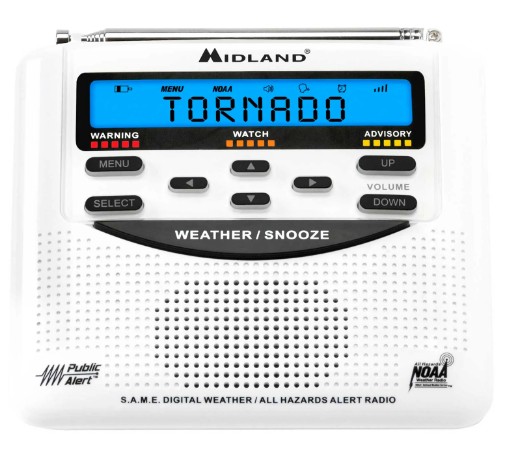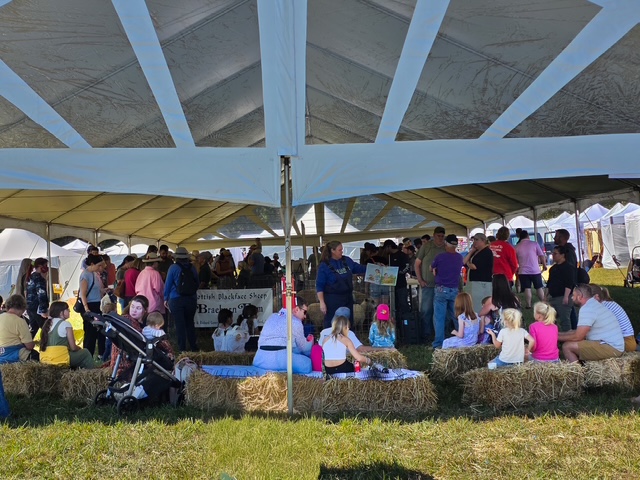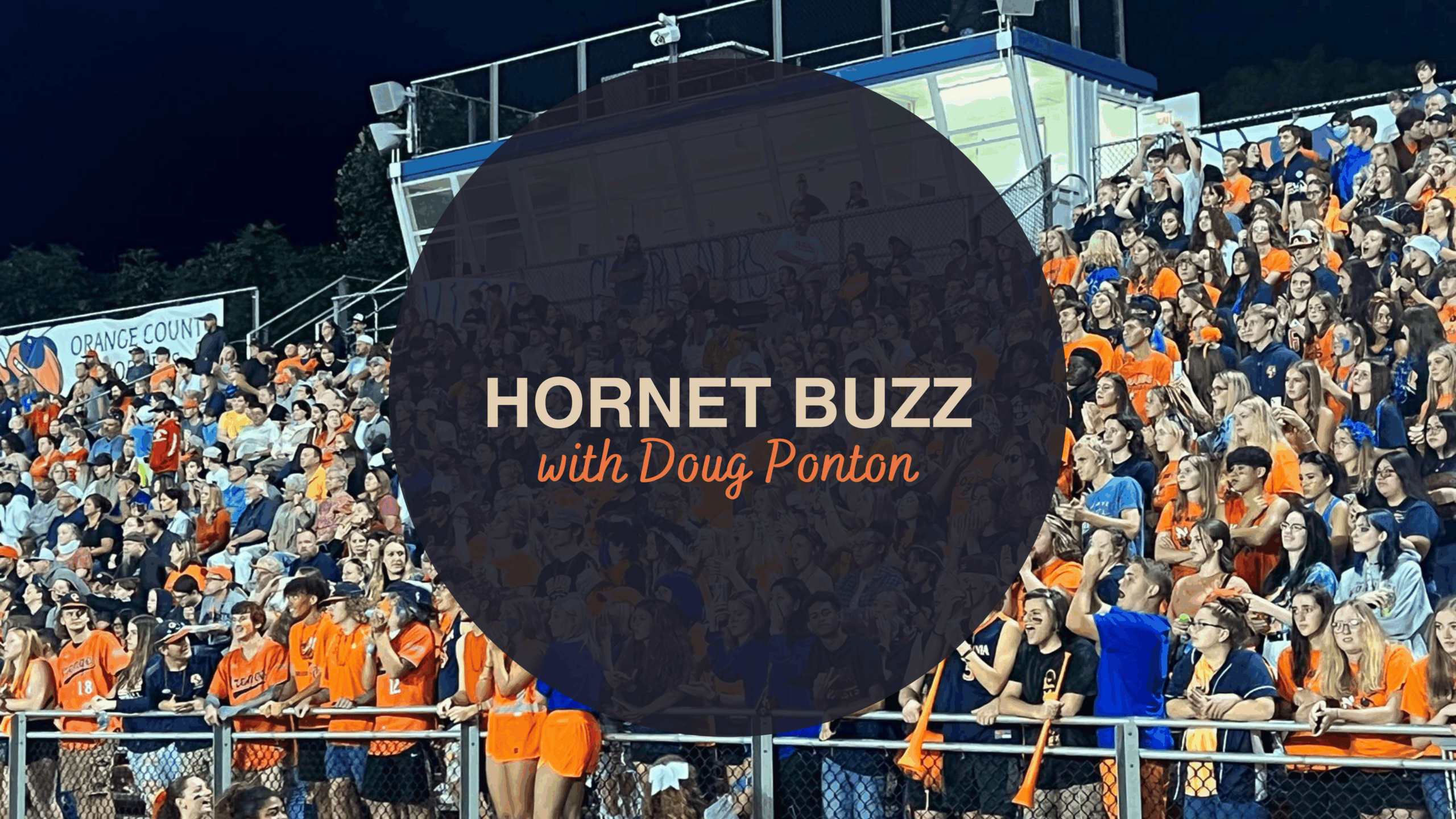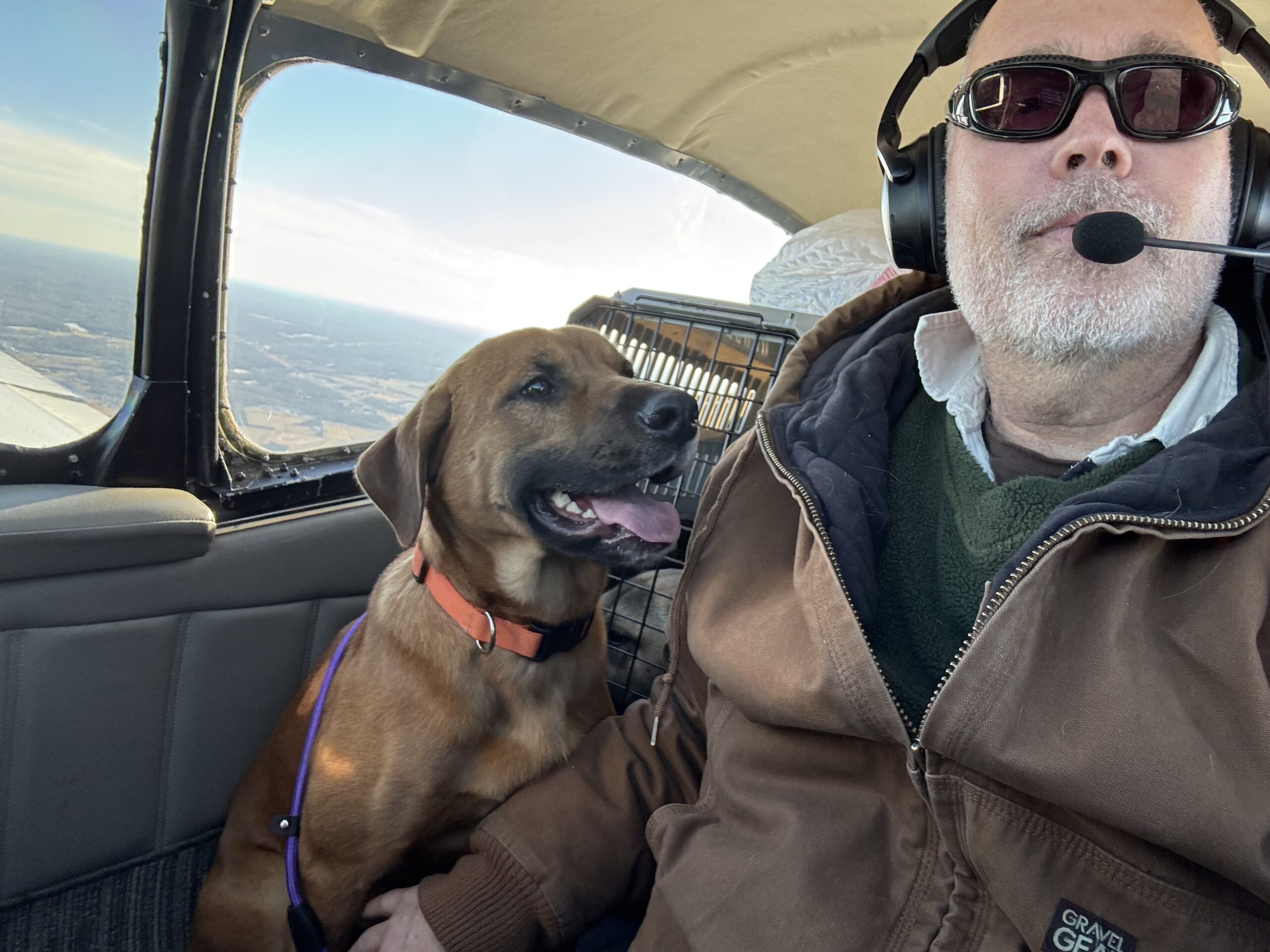
It’s two o’clock in the morning. Everyone in your house is sleeping, and thunderstorms are moving toward your area. As strong winds begin to shake the house, you realize something isn’t right. You wake your wife, grab the kids, and head to the basement—or an interior bathroom or hallway—for protection. But before you can get there, windows start breaking and debris begins flying around the house. In only a few seconds, you realize a tornado has struck your home, and you’re digging yourself and your family out from under the debris. Fortunately, everyone is okay—but it could have been worse.
As you try to regroup, you say to your wife and kids, “What happened? Was that a tornado or just high winds? We had no warning!”
Your neighbor was also hit by the tornado, but his family was safely tucked away in their basement several minutes before it struck. There were no injuries, and they immediately came over to check on your family.
After confirming that everyone is okay, you ask your neighbor if he had any warning of the tornado. “I have a NOAA Weather Radio (NWR),” he replies. “We started hearing warnings for the counties to our west about an hour ago. When the warning came out for our county, we headed to the basement and rode out the storm under the stairs.”
NWR is a nationwide network of radio stations that broadcast weather information directly from the National Weather Service. Forecasts, watches, warnings, and other hazardous information are broadcast 24 hours a day. The NWR transmitter serving Louisa and Orange counties is KZZ28 in Covesville, broadcasting on 162.450 MHz. There is another transmitter in Fredericksburg—WZ2527—broadcasting on 162.425 MHz, which covers Spotsylvania County. Richmond also has a transmitter, WXK65, broadcasting on 162.475 MHz.
When a watch or warning is issued by the National Weather Service, you receive the information almost instantaneously. If you’re watching TV or listening to the radio, there may be a lag time of several minutes before the information is broadcast. If it’s late at night and you’re relying on TV or radio, you may never hear it at all, since you’ll likely be asleep.
NWR radios have an alert feature that allows you to put the device into sleep mode. If a watch or warning is issued, the radio emits a loud tone—which will wake you up—and automatically turns itself on so you can hear the information.
The Federal Communications Commission’s (FCC) Emergency Alert System is tied into NWR, making it your single source for weather and emergency information. Along with weather alerts, other hazards such as earthquakes, volcanoes, chemical releases, and nuclear power plant emergencies are also broadcast on NWR. NWR is a public service provided by the National Oceanic and Atmospheric Administration (NOAA). There are more than 850 transmitters covering all 50 states and other coastal territories.
To receive NWR broadcasts, a special radio receiver or scanner is required. These can be purchased at many electronic, hardware, and outdoor stores in the area. The frequencies are spread across the United States so that signals from one transmitter do not interfere with another nearby. The cost of a standard NWR is around $50. Most homes and businesses already have a fire extinguisher, smoke alarms, a first aid kit, and an emergency flashlight. Isn’t it about time you invested in an NWR for your family’s safety?

I grew up an Air Force Brat. Traveled the country and lived in Georgia, Maine, New York, Hawaii and Oklahoma.
I fell in love with the weather in Oklahoma. My father was transferred to Tinker AFB in 1973. While in Temporary housing (a mobile home, which is the standard in Oklahoma) I experienced my first severe thunderstorm with strong winds and hail the size of baseballs. The next day I was in the base library looking up books on weather. The rest is history.
I graduated from the University of Oklahoma in 1983 with a Bachelor’s Degree in Meteorology. The first two years we took Calculus, Differential equations, Physics, Chemistry and Computer science classes with the Engineering Students. It was a grind. My degree is actually from the College of Engineering. The last 2-3 year’s focus was on Meteorology including Observational networks (Satellite, Radar, Surface), Physics, Thermodynamics, Dynamics, Synoptic, Winter Weather, Severe Weather and Climatology.
My first job out of college was with a small forecasting company in Oklahoma City. I was immediately put on TV (OETA) and Radio (WKY) as their broadcast Meteorologist. After two years in broadcasting, I decided to pursue the National Weather Service route and got a position in Toledo, OH as an intern. After a couple of years, I was promoted to a forecaster position at the Cleveland Forecast office. I quickly moved into the Weather Preparedness position and was responsible for all the preparedness activities in the state of Ohio.
In 1992 I decided to pursue other forecast opportunities and moved to the Meteorological Operations Division of the National Meteorological Center in Washington, DC. This group is now called WPC (Weather Prediction Center). There I fine-tuned my forecasting of Synoptic Weather with my focus on Heavy Convective Rainfall and Winter Storms, under the supervision of Dr. Louis Uccellini. He has written several books on East Coast Winter storms. I was promoted to a Senior Branch Forecast position during my tenure at MOD. Part of my job was to teach weather classes at COMET (Cooperative Program for Operational Meteorology, Education, and Training).
In 2012 I was given the opportunity to start up a new weather support group with the FAA (Federal Aviation Administration) in Warrenton, VA at the ATCSSC (Air Traffic Control System Command Center). The ATCSCC is where the FAA identifies solutions to air traffic inefficiencies in the NAS (National Air Space) for the CONUS (Continental United State). Weather impacts are the biggest impact on Aviation with yearly losses over 20 billion dollars. My job was to help lower these inefficiencies/costs by providing weather impact briefings and forecasts in order to keep the air planes moving as safely and efficiently as possible.
I retired in 2022 and now am running Lake Anna Weather, LLC.
Subscribe for Updates
Sponsors
Latest Articles
Ninety Years of Montpelier Races Honor Orange County Heritage

Letter from the Editor: A Call for Support

NOAA Weather Radios

Fall Fiber Festival Weaves Art and Agriculture Together

Tapestry Festival Brings Color and Culture to Orange

Fields of the Future: OCHS Invests in Student Growth

It’s two o’clock in the morning. Everyone in your house is sleeping, and thunderstorms are moving toward your area. As strong winds begin to shake the house, you realize something isn’t right. You wake your wife, grab the kids, and head to the basement—or an interior bathroom or hallway—for protection. But before you can get there, windows start breaking and debris begins flying around the house. In only a few seconds, you realize a tornado has struck your home, and you’re digging yourself and your family out from under the debris. Fortunately, everyone is okay—but it could have been worse.
As you try to regroup, you say to your wife and kids, “What happened? Was that a tornado or just high winds? We had no warning!”
Your neighbor was also hit by the tornado, but his family was safely tucked away in their basement several minutes before it struck. There were no injuries, and they immediately came over to check on your family.
After confirming that everyone is okay, you ask your neighbor if he had any warning of the tornado. “I have a NOAA Weather Radio (NWR),” he replies. “We started hearing warnings for the counties to our west about an hour ago. When the warning came out for our county, we headed to the basement and rode out the storm under the stairs.”
NWR is a nationwide network of radio stations that broadcast weather information directly from the National Weather Service. Forecasts, watches, warnings, and other hazardous information are broadcast 24 hours a day. The NWR transmitter serving Louisa and Orange counties is KZZ28 in Covesville, broadcasting on 162.450 MHz. There is another transmitter in Fredericksburg—WZ2527—broadcasting on 162.425 MHz, which covers Spotsylvania County. Richmond also has a transmitter, WXK65, broadcasting on 162.475 MHz.
When a watch or warning is issued by the National Weather Service, you receive the information almost instantaneously. If you’re watching TV or listening to the radio, there may be a lag time of several minutes before the information is broadcast. If it’s late at night and you’re relying on TV or radio, you may never hear it at all, since you’ll likely be asleep.
NWR radios have an alert feature that allows you to put the device into sleep mode. If a watch or warning is issued, the radio emits a loud tone—which will wake you up—and automatically turns itself on so you can hear the information.
The Federal Communications Commission’s (FCC) Emergency Alert System is tied into NWR, making it your single source for weather and emergency information. Along with weather alerts, other hazards such as earthquakes, volcanoes, chemical releases, and nuclear power plant emergencies are also broadcast on NWR. NWR is a public service provided by the National Oceanic and Atmospheric Administration (NOAA). There are more than 850 transmitters covering all 50 states and other coastal territories.
To receive NWR broadcasts, a special radio receiver or scanner is required. These can be purchased at many electronic, hardware, and outdoor stores in the area. The frequencies are spread across the United States so that signals from one transmitter do not interfere with another nearby. The cost of a standard NWR is around $50. Most homes and businesses already have a fire extinguisher, smoke alarms, a first aid kit, and an emergency flashlight. Isn’t it about time you invested in an NWR for your family’s safety?

I grew up an Air Force Brat. Traveled the country and lived in Georgia, Maine, New York, Hawaii and Oklahoma.
I fell in love with the weather in Oklahoma. My father was transferred to Tinker AFB in 1973. While in Temporary housing (a mobile home, which is the standard in Oklahoma) I experienced my first severe thunderstorm with strong winds and hail the size of baseballs. The next day I was in the base library looking up books on weather. The rest is history.
I graduated from the University of Oklahoma in 1983 with a Bachelor’s Degree in Meteorology. The first two years we took Calculus, Differential equations, Physics, Chemistry and Computer science classes with the Engineering Students. It was a grind. My degree is actually from the College of Engineering. The last 2-3 year’s focus was on Meteorology including Observational networks (Satellite, Radar, Surface), Physics, Thermodynamics, Dynamics, Synoptic, Winter Weather, Severe Weather and Climatology.
My first job out of college was with a small forecasting company in Oklahoma City. I was immediately put on TV (OETA) and Radio (WKY) as their broadcast Meteorologist. After two years in broadcasting, I decided to pursue the National Weather Service route and got a position in Toledo, OH as an intern. After a couple of years, I was promoted to a forecaster position at the Cleveland Forecast office. I quickly moved into the Weather Preparedness position and was responsible for all the preparedness activities in the state of Ohio.
In 1992 I decided to pursue other forecast opportunities and moved to the Meteorological Operations Division of the National Meteorological Center in Washington, DC. This group is now called WPC (Weather Prediction Center). There I fine-tuned my forecasting of Synoptic Weather with my focus on Heavy Convective Rainfall and Winter Storms, under the supervision of Dr. Louis Uccellini. He has written several books on East Coast Winter storms. I was promoted to a Senior Branch Forecast position during my tenure at MOD. Part of my job was to teach weather classes at COMET (Cooperative Program for Operational Meteorology, Education, and Training).
In 2012 I was given the opportunity to start up a new weather support group with the FAA (Federal Aviation Administration) in Warrenton, VA at the ATCSSC (Air Traffic Control System Command Center). The ATCSCC is where the FAA identifies solutions to air traffic inefficiencies in the NAS (National Air Space) for the CONUS (Continental United State). Weather impacts are the biggest impact on Aviation with yearly losses over 20 billion dollars. My job was to help lower these inefficiencies/costs by providing weather impact briefings and forecasts in order to keep the air planes moving as safely and efficiently as possible.
I retired in 2022 and now am running Lake Anna Weather, LLC.
Subscribe for Updates
Sponsors
latest articles
Ninety Years of Montpelier Races Honor Orange County Heritage

Letter from the Editor: A Call for Support

NOAA Weather Radios

Fall Fiber Festival Weaves Art and Agriculture Together

Tapestry Festival Brings Color and Culture to Orange

Fields of the Future: OCHS Invests in Student Growth


Fields of the Future: OCHS Invests in Student Growth
Article By Doug Ponton

Grant Supports Preservation of Historic 1863 Mine Run Battlefield in Orange County
Article By Jen Bailey



